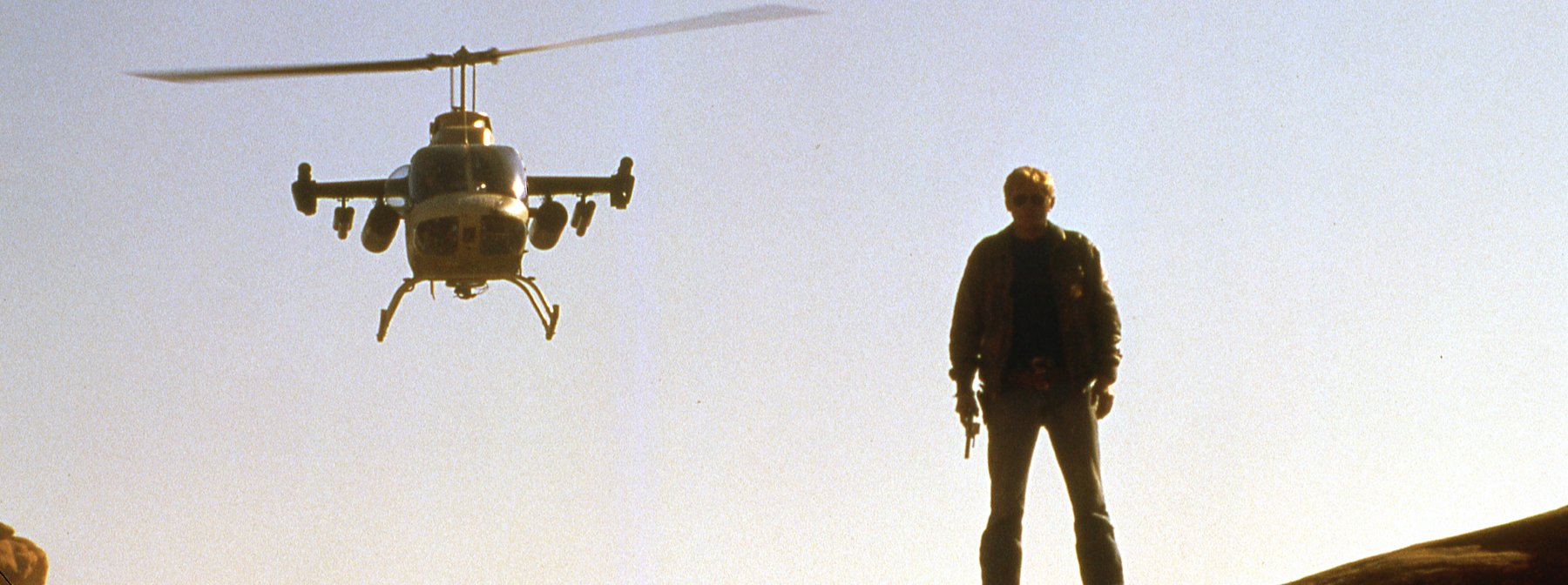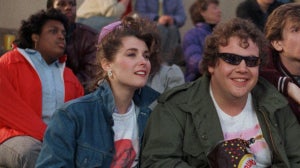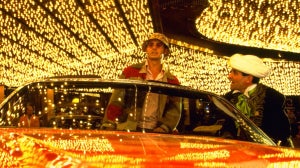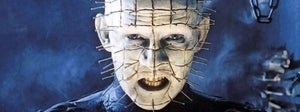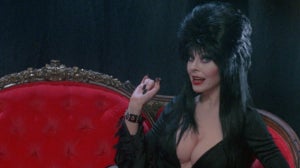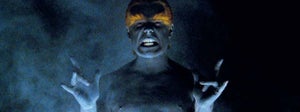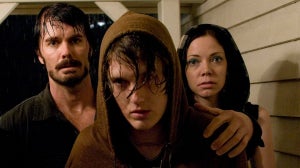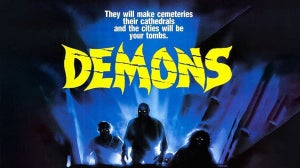
The hellraiser from Hallas, the Grecian guru of pulp cinema, and the awe-inspiring Athenian are just some of the fitting descriptors of film director, writer, novelist, and musician, Nico Mastorakis. Trying to write about his work without overusing adjectives like “fun,” “harrowing,” and “jaw-dropping” is tricky, but it is okay because that is why I am here. Luckily for us both, the handful of Mastorakis’ films about to be delved into are much more than fun, harrowing, and jaw-dropping! Most movies can barely reassure you that even ⅔ of that is legitimately possible, but with a Nico film, it is only the tip of the iceberg.
Exploring Nico’s films, starting with 1976’s Death Has Blue Eyes, is a journey that grips you like a dark-eyed eccentric uncle who turns out to not only be a brilliant storyteller but one that has the ultimate spiral staircase of an imagination that never ceases to unwind. From the evocative title to the successful blending of action, intrigue, and the supernatural, it is immediately clear that Nico’s prior years of toiling in television production in his native Greece helped develop and hone some strong visual storytelling skills. Mastorakis is also fearless, especially when it comes to creating morally questionable protagonists.
The two male leads in Death Has Blue Eyes, Bob (Peter Winter) and the striking Ches (Hristos Nomikos), are classic examples of characters whose approach to life could be summed up with, “not here for a long time, but a good time.” Bob’s an amoral grifter whereas Ches is a gigolo with no discernible empathy for his sweet-paying sugar momma, including banging random topless maids (?!) in her own home and bed.
These are the heroes.
Yet, this is not a detriment at all to the film, since Mastorakis uses these characters to help paint a bigger picture of a world full of crime, sleaze, unreliable narrators, and wild abandon tinged with nihilism. Seeing these two stumble into being hired to protect Christine (Maria Aliferi), a beautiful woman with the powers of clairvoyance, pyrokinesis, and telekinesis, is fascinating and adds further tension to the proceedings. Especially since Christine is the flaxen-haired lamb in a field of wolves and in the case of Bob and Ches, two rangy badgers that keep dipping into the local shepherd’s stash of Spanish fly.
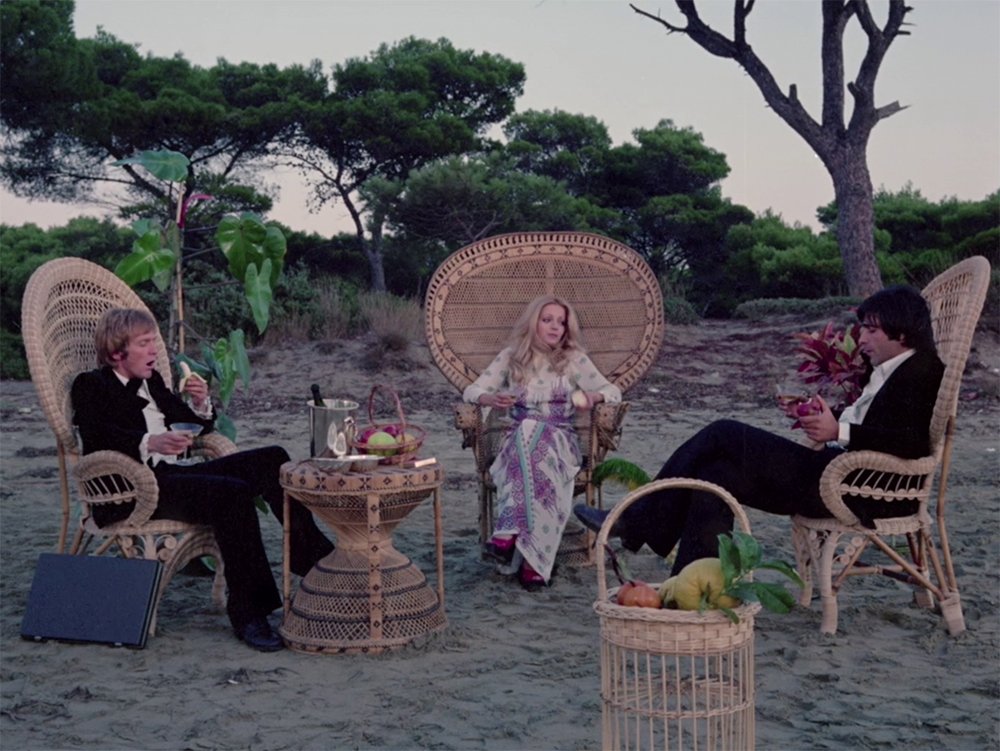
Speaking of shepherds and films also released in 1976, Mastorakis wrote and directed not only his most infamous movie but one of the most outre “video nasties” with Island of Death. With extreme cinema, it is easy to evaluate individual films like they are a holiday wish list for the edge lord in your family, but like with anything else in life, easy is not necessarily the best way to examine anything. One can triple that sentiment when it comes to a talented director like Nico.
Island of Death is a film that rewards a stronger constitution and open mind while providing more than one riveting twist. Our two main characters here are young newlyweds in the form of Christopher (Bob Behling) and Celia (Jane Lyle), who make Bob and Ches look like chaste seraphim. Depravity is a word that tends to get over and misused, especially since few films, characters, and stories end up delivering on that promise of sticky-sweet, rotten fruit. That said, Celia, and especially Christopher, are unquestionably depraved to an extent that even a sex pest circus clown would be aghast. Aroused sure, but still, aghast.
What makes Island of Death an unforgettable experience of a film, though, is not the rampant murder, implied bestiality, crucifixions, incest, decapitations, hate crimes, or any other hellish sundries. No, it’s the writing and undercurrent of the blackest of black humor. One would be hard-pressed to think of a horror villain that is more of an entitled and smug prat than Christopher. His confidence that he is doing the lord’s work while “cleansing” the idyllic Greek isle of Mykonos, while he is the biggest degenerate in the least sexy way possible, is bile-inducing. This is perfect, though, since what could be more true to life? Any time one sees, say a politician or religious leader, who is extreme in their conservative views, you can all but hear the clock ticking on when their innumerable skeletons are going to Twyla Tharp their way out of the closet. The hypocrisy gets so thick that it garners the scent of a charnel house for human decency and love.
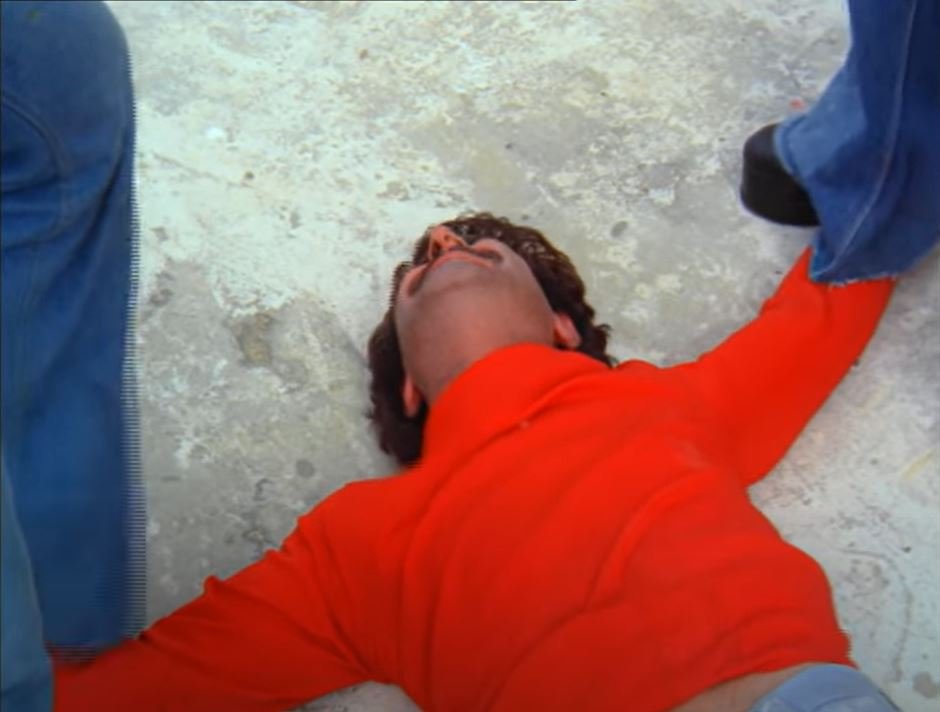
Christopher’s assuredness further hammers this home, since he does not carry himself like a wild-eyed religious fanatic whose mental illness is a sad, but dangerous lodestone. He is so rage-inducingly pompous, that his inevitable comeuppance would feel like a weak handshake in the hands of any other director. Mercifully, Nico Mastorakis is not just any other director, and the film’s final act sports a curveball that is so demented, beautiful, and yes, even life-affirming, that it pivoted Island of Death from one of my least favorite Nico films to one of my favorites. The way that Disney films inspire hope and mirth in all your apple-cheeked co-workers who refuse to stop talking about franchise series and films? Island of Death’s climax will be your much-needed tonic.
Plus, I would be remiss if I did not make at least a quick mention of the soundtrack, which includes some expertly used fiery folk tunes that give the grim proceedings an even more precise patina of pain. The song, “Destination Understanding,” is the big standout here. Co-written by Nico himself, this song is proof that any folk tune that appears to have the choral refrain of “...get the sword…” should absolutely be cherished.
Nico relocated to the United States in the 1980s and continued his directorial path, going in a slightly different but equally rewarding route. With 1986’s The Zero Boys, we see Mastorakis blend genres Ala Death Has Blue Eyes, but instead of espionage and ESP-laced terror, we get action-adventure with slasher horror that sports a likable young cast led by Daniel Hirsch and cult favorite Kelli Maroney. Part and parcel with the mix of genres is the way that Nico incorporates and plays upon certain tropes and expectations, combining nods to Sylvester Stallone’s Rambo and the incorporation of military-style weapons and tactics along with the horror.
Speaking of the red stuff, making the backwoods serial killers tech-savvy is an inspired choice, especially for 1986. In lesser hands, this would be a fascinating but sloppy-soupy mess, but with Nico, The Zero Boys works. Plus, in years of researching, writing, and discussing a wild assortment of movies, I have never jotted down the phrases “snuff psychos” and “Is that Joe Estevez?” in my notes at the same time until watching The Zero Boys. Also in 1986, Mastorakis, ever the filmmaker with a deft touch, directed a different kind of horror film with The Wind. Starring the great Meg Foster as Sian Anderson, a successful murder-mystery writer who travels to the small Greek island of Monemvasia to focus and work on her next novel. There is such an exquisite use of the gorgeous but desolate location throughout The Wind. The story, while somewhat simple, is expertly told and lends itself to furthering how captivating the whole experience is. Once the violent game of cat and mouse emerges between Sian and the mentally and physically volatile handyman, Phil, the tension never lets up until the end credits start to roll. The Wind has such a tangible and mesmerizing atmosphere with one of Mastorakis’ smallest yet mightiest casts.
Getting to see Foster in a lead role is a delight, especially since she is an actress that is consistently great to watch in anything and everything she graces. There’s also the great Robert Morley, David McCallum, and Steve Railsback, who should really be in everything. But the wild-eyed gem here is the man, the myth, and the legend, Wings Hauser as psycho-man Phil. Getting to see this charismatic brute of an actor run around manic, sniffing amber-colored ampoules, and sporting a mustache to boot is the holiday gift that’s never too late or early to give or receive.
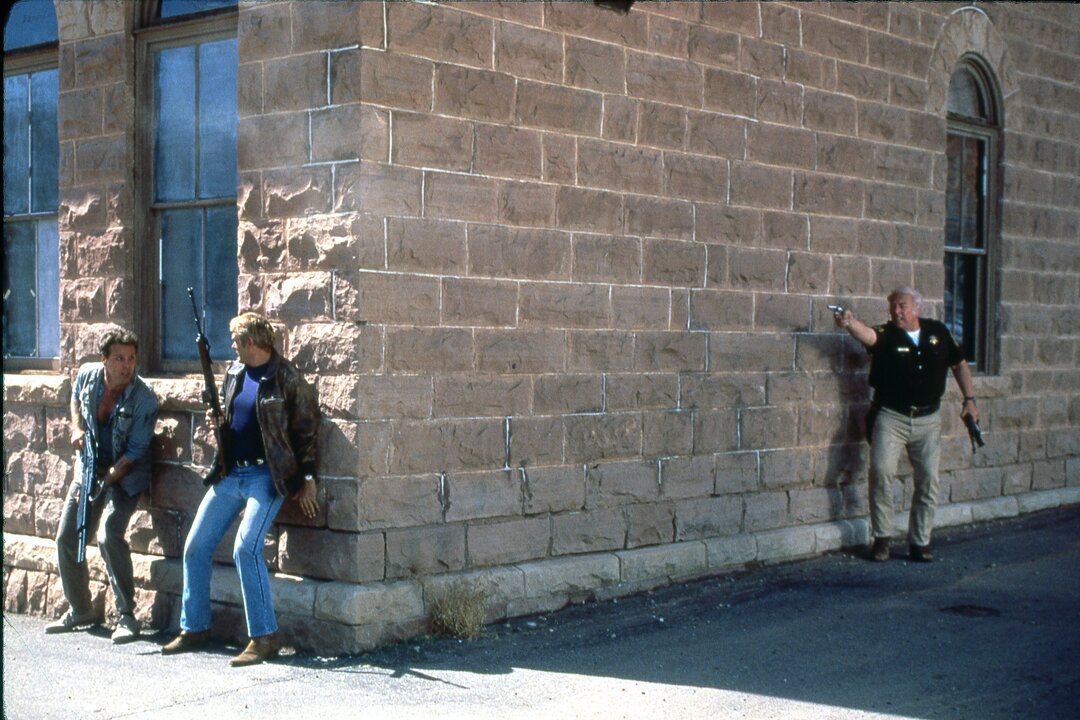
Speaking of gifts, Arrow has recently released Nico’s 1988 film Nightmare at Noon, keeping up its tradition of preserving several of Mastorakis’ key films. Nightmare at Noon is what happens when you take one part 1950s-style men’s adventure pulp, equal-parts environmental-pollution-themed science-fiction, 1952’s High Noon, and a strong sniff of whatever Phil from The Wind was snorting. The cast is a candy-coated valentine to character actor lovers everywhere, featuring Bo Hopkins, George Kennedy, Brion James (as a villainous, mute albino!?!), and, yes, WINGS HAUSER. Nightmare at Noon is the ultimate drive-in-movie style experience, with the only thing missing being the outdoor theaters of yore themselves. Why does Nico Mastorakis love us so much when he doesn’t even know us???
A director like Nico Mastorakis is one whose work provides rewards for viewers that are fun, a tiny smidge harrowing, and definitely jaw-dropping. From Death Has Blue Eyes to Nightmare at Noon, the cinema of Mastorakis is one that is magnetic with its visuals, sound, writing, and direction. This is an artist who steadfastly refuses to be boring, which is the biggest green light for the curious and converted alike to dive in and celebrate all things Mastorakis.

Related Articles

